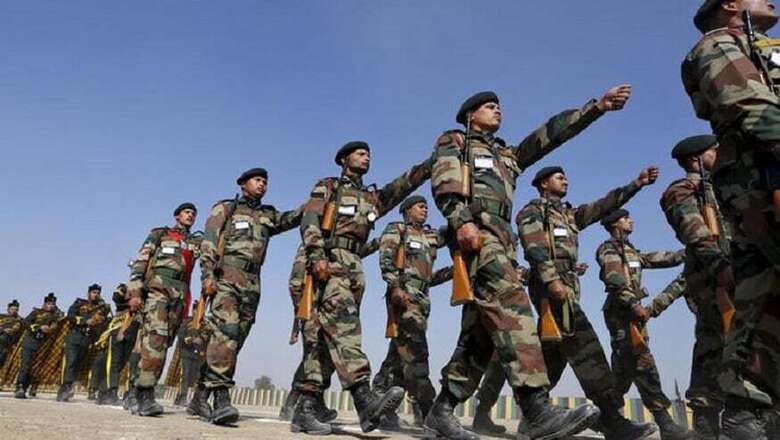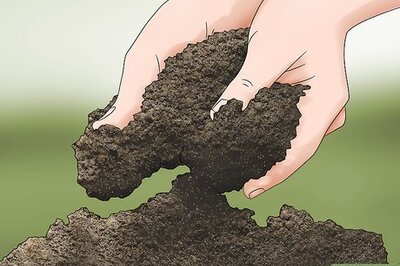
views
Ladakh, by the recent amendment of the Constitution, has been made into a Union Territory. The manoeuvre used by the government to separate Ladakh from the erstwhile state of Jammu & Kashmir to resolve the Kashmir crisis would not have been possible but for the valiant efforts of Indian soldiers in first defending the area from tribal raiders in 1947-49, and later securing it for seven decades in the most inhospitable situation.
The accession of Jammu & Kashmir to India and swift entry of the Indian army in the autumn of 1947 did not discourage Pakistan enough to give up its plan. Governor General Mohammed Ali Jinnah took matters in his control and supervised the invasion of Kashmir by the Frontier tribesmen. In the initial months, due to the severity of winter, Ladakh did not get sufficient focus and was left under the charge of soldiers belonging to the J&K State Forces of the erstwhile princely state.
These winter months, however, gave time to the Indian Army to put its war machinery in place. Jammu and Kashmir was now reorganised into two military divisions — Srinagar and Jammu. The Srinagar division was put under the command of Major General (later General) KS Thimayya and the Jammu division under Major General Atma Singh. Ladakh came under the Srinagar division.
Leh initially had only 33 State Forces soldiers; thus when news came that the tribal Lashkars had attacked Skardu, it set panic in the town. The first Indian detachment to reach Leh consisted of just 16 soldiers, including two officers. They were joined by additional 58 soldiers from the State Forces. The team was led by Major Prithi Chand of 2 Dogras. He crossed the pass in peak winter and reached Leh on March 8. He sent out platoons but in the meanwhile Kargil fell to the raiders and when the snow melted, the raiders started assembling and planning the capture of Leh.
The people of Leh felt threatened and on May 17 and the following days, Major Coutts and Lt Col Sampuran Bachan Singh and the dispirited remnants of the troops from Kargil reached Leh. Since sending reinforcements to Leh on foot was proving to be a great impediment, the work on Leh airstrip started. However, panic set following intelligence about advancing tribal Lashkars.
This made the military leadership decide that a senior Indian Air Force officer, Air Commodore Mehar Singh, would fly a plane to Leh and Gen Thimayya decided to accompany him, the date being May 24, 1948.
It was a leap in the dark and the achievement of landing at over 11,500 feet on a makeshift airstrip gave a great fillip to the people of the town. The earliest planned fly-in for troops was scheduled for May 30 — one company of 2/4 Gorkha Rifles.
Meanwhile, on May 28, a column of 2/8 Gorkha Rifles left Ferozepur for Manali to march to Leh over the mountains. The column was commanded by Major Hari Chand and had a total of 151 soldiers. Since the marching column would reach Leh only in the first week of July, all hopes were pinned on the air effort. The Dakotas took off on May 30 but were turned back due to bad weather. They finally landed on June 1 and the troops were immediately rushed into battle where they somewhat stabilised the situation.
Lt Col HS Parab, the commanding officer of 2/8 GR, was flown in on August 23. By August 30, a total of 123 troops and supplies had been airlifted and the remainder of the force came by foot over the Rohtang Pass. Before being flown in, on August 19, Col Parab was appointed the Military Governor of Ladakh and he, on reaching Leh, took over all civil, executive and judicial control of the district. The defences of Leh thus grew strong.
Though Ladakh had a small civilian population, the influx of refugees from the rural areas captured by the raiders brought horrific tales and demoralised the population. One of the challenges before Col Parab was to reinstall that confidence in the people. Moreover, the orders for him from Gen Thimayya were, “You will defend Leh at all cost.” He did so with much élan, not only building defences but also setting up the first civilian government in place complete with a ‘Cabinet’. The morale of the population slowly went up and they were now completely supportive of the war efforts.
Before the onset of winter, Indian Army’s 77 Para Brigade’s thrust on Zoji La was successful as the crucial pass was opened to link Kargil and Ladakh with the rest of the state. With this success, Leh was now better secured. On November 20, the military leadership at Srinagar division sent out instructions to the military administrator of Leh for link-up with 77 Para Brigade at Kargil, which had by now been recaptured from the tribal raiders. Col Parab got into action, captured Khalaste and linked up with Kargil.
In May 1948, Leh was within the grasp of the raiders, but they failed to capitalise. Major Hari Chand was awarded Maha Vir Chakra for his exploits. Leh proved to be a war of logistics. The Manali route was a life-saver, and General Thimayya’s idea of making Manali a logistics base with porters and ponies was indeed novel. The capture of Zoji La was a key turning moment, so was the support provided by air.
Col Parab, after the announcement of ceasefire in January 1949, dissolved his ‘Cabinet’ though he remained Military Governor for some more time. The district was now completely secured and saved for posterity.
(The writer is a senior journalist with a keen interest in military history)


















Comments
0 comment